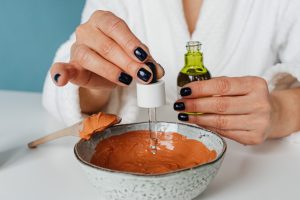Notice A Huge Difference With Serums

Serums have become increasingly popular in recent years due to their ability to target specific skin concerns and deliver potent, active ingredients to the skin. However, with so many different types of serums on the market, it can be overwhelming to know where to start or how to incorporate them into your skincare routine. In this blog post, we will discuss how to incorporate serums into your skincare routine for maximum benefits.
What are serums?
Serums are lightweight, fast-absorbing liquids that contain high concentrations of active ingredients such as antioxidants, vitamins, peptides, and hyaluronic acid. They are designed to penetrate deeper into the skin than other skincare products, such as moisturizers, and target specific skin concerns.
Step 1: Cleanse your skin
Before applying any skincare product, it’s essential to start with a clean canvas. Use a gentle cleanser to remove any dirt, oil, and makeup from your face. This step is critical as it allows your skin to absorb the active ingredients in your serum more effectively.
Step 2: Tone your skin
Toning helps to balance the pH of your skin and prepares it for the next step in your skincare routine. After cleansing, apply a toner to your skin using a cotton pad or your hands. Toners can help to remove any remaining dirt or oil that your cleanser may have missed.

Step 3: Apply your serum
Once your skin is clean and toned, it’s time to apply your serum. Serums should be applied before your moisturizer to allow the active ingredients to penetrate deeply into your skin. Depending on the serum, you may only need a few drops or a pea-sized amount. Gently massage the serum into your skin using upward motions, avoiding the eye area.
Step 4: Moisturize your skin
After applying your serum, it’s time to moisturize your skin. Moisturizers help to lock in the active ingredients from your serum and provide an additional layer of hydration to your skin. Choose a moisturizer that is suitable for your skin type and apply it in upward motions to your face and neck.
Step 5: Protect your skin
Finally, protect your skin from the sun’s harmful rays by applying a broad-spectrum sunscreen with an SPF of 30 or higher. This step is crucial as exposure to UV radiation can cause premature aging, pigmentation, and even skin cancer.
Choosing the right serum
When it comes to serums, it’s essential to choose one that addresses your specific skin concerns. There are many types of serums available, including those that target fine lines and wrinkles, dark spots, and uneven skin tone.
Vitamin C serum: Vitamin C is a potent antioxidant that can help to brighten and even out skin tone. It also helps to protect the skin from free radical damage and stimulate collagen production.
Retinol serum: Retinol is a form of vitamin A that can help to reduce the appearance of fine lines and wrinkles. It also helps to increase cell turnover and stimulate collagen production.
Hyaluronic acid serum: Hyaluronic acid is a humectant that can hold up to 1000 times its weight in water, making it a highly effective moisturizer. It can help to plump up the skin and improve its texture and tone.
Niacinamide serum: Niacinamide is a form of vitamin B3 that can help to reduce inflammation and redness in the skin. It also helps to regulate oil production and improve the appearance of pores.

Choosing the right serum for your skin concerns can make a significant difference in the overall appearance and health of your skin.
Tips for maximum benefits
Patch test before use: It’s always a good idea to patch test a serum before applying it to your face. It’s important to apply a small amount first to see how your skin reacts to it. Start with a pea-sized amount and apply it to a small patch of skin, such as the inside of your wrist. Wait 24-48 hours to see if there are any adverse reactions, such as redness, itching, or irritation. If your skin doesn’t react negatively, you can then safely apply the serum to your face.

